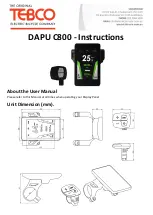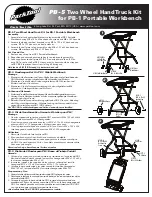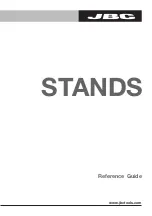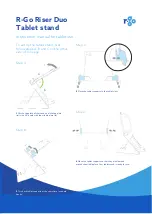
1
SYSTEM DESIGN
Systems Design is the process of defining the architecture,
components, modules, interfaces, and load data for a system
to satisfy specified requirements. For a solar system these
components are the PV modules, inverter/charge controller
& batteries, as well as the different interfaces of those
components.
To properly size a battery/battery bank for a renewable energy
system the following parameters are required:
Load
– Amount of DC current (Amps, Ah) or power (Watts,
Wh) a battery is required to supply to a DC load or AC loads
through an inverter.
Time
– expressed in hours the battery will be required to
provide the load.
System Voltage
– DC system operating voltage
Ambient Temperature
– Average temperature of battery
room or enclosure.
Depth of Discharge (DoD)
– The proportion of energy that
has been removed from a battery; typically in a 24hr period
Example:
100% DoD is removing all
of the energy from a battery.
Autonomy
– Length of time PV system can provide energy to
load without energy from PV array
Design Margin
- Factor (typically expressed as a percentage)
to allow for future load additions.
A Renewable Energy Worksheet is provided in
Appendix A
listing the above requirements along with additional information
requirements
BATTERY OPERATION
There are several factors that affect the operation of the battery
concerning its ability to deliver capacity and life expectancy.
Temperature
Many chemical reactions are effected by temperature, and
this is true of the reaction that occurs in a storage battery.
The chemical reaction of a lead-acid battery is slowed down
by a lowering of the electrolyte temperature that results in
less capacity. A battery that will deliver 100% of rated
capacity at 77° F will only deliver approximately 65% of
rated capacity at 32°F.
At temperatures below 32°F (0°C) a battery can freeze
dependent on the DoD (Depth of Discharge). The higher the
DoD, the closer to 32°F (0°C) before the battery will freeze.
The graph in Appendix C should be consulted to verify the
DoD of the battery / battery bank at the end of the discharge
will not be susceptible to freezing in a particular application.
If the electrolyte would freeze, the internal damage would be
irreversible requiring the battery to be replaced.
Excessive heat will increase the natural corrosion factors of a
lead-acid battery. This increase corrosion of the positive plates
contributes greatly to reducing the overall life of the battery.
Depth of Discharge (DoD)
Depth of discharge is a function of design. The deeper the
discharge per cycle, the shorter the life of the battery. A
cycle is a discharge and its subsequent recharge regardless
of depth of discharge.
Systems should be designed for shallow discharges. The
result of shallower discharges is typically a larger capacity
battery at prolonged battery life.
A Cycle vs. DoD chart should be consulted to determine the
number of cycles at a specific DoD and the projected life in
years the battery / battery system will provide prior to need-
ing replacement.
Charging
Majority of battery capacity/life issues can be traced to
improper charging. Improper charging settings may lead to
an overcharging or undercharging condition.
Typical Inverters/Charge Controllers charging lead-acid
batteries use 3 stage charging: Bulk, Absorption and Float
with an optional equalize stage.
See Appendix B for an
example of a typical 3-stage charging curve.
Inverter/Charge Controller Settings
Proper Inverter/Charge Controller settings are necessary
to ensure peak battery performance and life. All bulk,
absorption, float and equalize settings should be verified they
are within the battery manufacturers settings. These settings
are included but not limited to; voltage, current and time.
Consult individual battery Installation & Operating manuals
for inverter/charge controller setting recommendations.
Default settings should not be presumed to be correct.
For battery systems located in an uncontrolled temperature
environment, temperature compensation must be used.
Bulk
Current is applied to the batteries at the maximum safe rate
they will accept until voltage rises to near (80-85%) full charge
level. The battery voltage rises because the charging current
that is provided by the battery charger is replenishing its
internal charge capacity. The charger current is flat (constant)
and the battery voltage is rising.
Maximum allowable charge voltage & current allowed by
the battery manufacturer should be used to ensure the most
energy is returned within the bulk stage.
Renewable Energy applications that depend on battery power as part of the system operation must be at
maximum performance at all times. To ensure this high rate of performance is achieved, the battery charging
system must be set properly. A battery/battery bank that is undercharged or overcharged will affect the
battery system performance & life, as well as the performance of the entire system.
Key factors that affect a batteries ability to provide the capacity and long life that is expected are: System
Design, Storage, Temperature, Depth of Discharge (DoD), Charging and Maintenance.
Содержание SOLAR Monoblock VRLA System
Страница 1: ...Monoblock VRLA System Installation Operating Manual ...
Страница 12: ...10 APPENDIX B Example of typical 3 stage charger ...
Страница 13: ...11 APPENDIX C Depth of Discharge vs Freezing Point ...
Страница 14: ...12 APPENDIX D Capacity vs Operating Temperature ...
Страница 16: ...14 APPENDIX F Charging Current vs Charging Time chart Discharge Voltage Curve ...
Страница 17: ...APPENDIX G ...




































